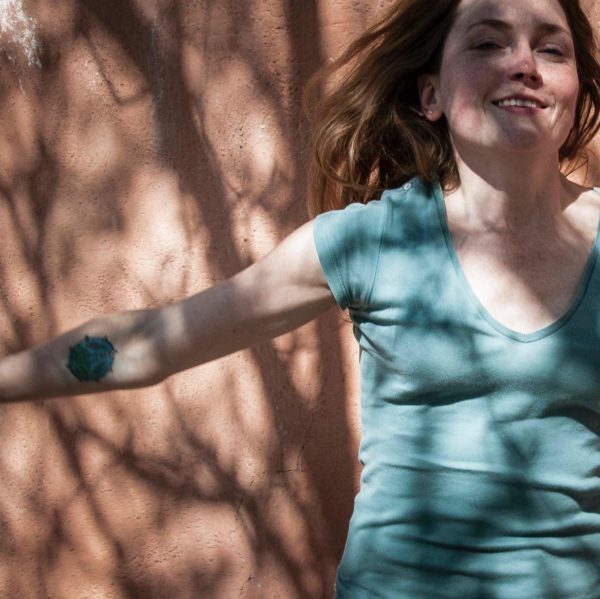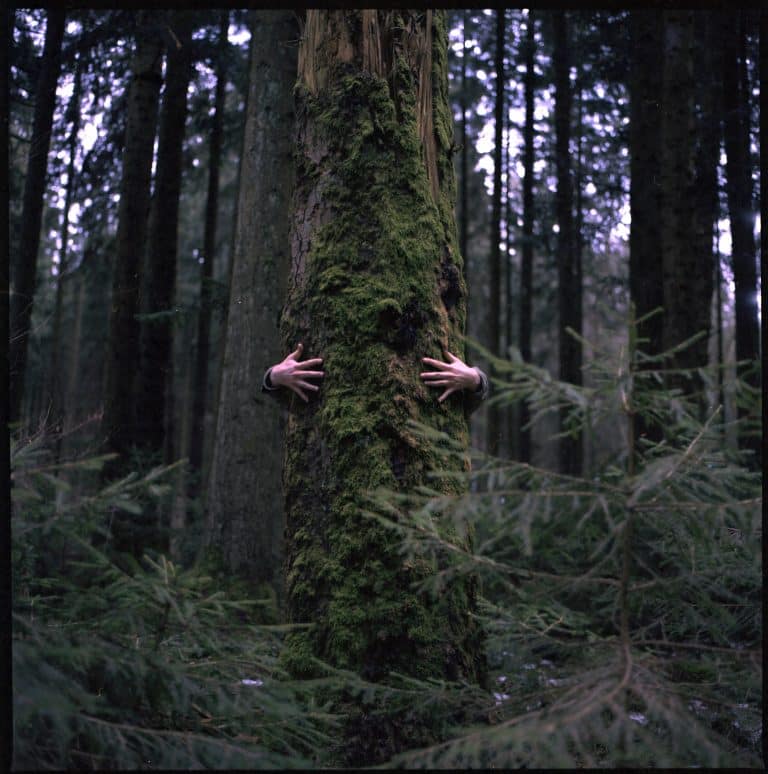Places to Play In and Pray In: Sacred Texts for Earth Day
“When we contemplate the whole globe as one great dewdrop, striped and dotted with continents and islands, flying through space with other stars all singing and shining together as one, the whole universe appears as an infinite storm of beauty.”
—John Muir, Travels in Alaska
On February 14, 1990, astronomer Carl Sagan made a request for the Voyager 1 space probe to reverse its camera and take one last photograph of our planet Earth before leaving the solar system on its way toward interstellar space. The image, a tiny pixel-sized dot amidst the blackness of space, was taken from a distance of about six billion kilometers, approximately 3.7 billion miles away, and is part of NASA’s Family Portrait series. “Pale Blue Dot,” the image is called — our Earth, one little dewdrop among many, dangling in space, our precious daily jewel.
This year we celebrate Earth Day for the forty-sixth time. All but a handful of countries will once again honor this international day of peace and environmental protection. Despite religious and political differences across our planet, despite continued clashes in the name of fundamentalism, people of all faiths will be called to celebrate our shared home.
This means that while we gather in the United States to reflect upon our human relationship with the Earth, the people in Iran, for example, will be holding a similar focus. We share the same environmental issues: water scarcity, climate change, population growth, urban development, CO2 emissions, nuclear safety, resource depletion, pesticide drift, and the list goes on. How then, should we celebrate Earth Day, given the issues we face together?
A member of my family is leaving this earth soon: grandmother, in my personal family portrait series. I sit on the bed next to her photo albums and stacks of newspaper clippings. A Polish woman in her early nineties, my grandmother has recently been transferred from the hospital to an assisted living facility after undergoing surgery for cervical cancer. She sits with her feet up in the reclining chair. Cold air blows from the central cooling duct above her head, fluttering her thin brown hair.
It’s summer in Minnesota and the flamingo-pink roses are spilling their petals across the sunbaked sidewalks. Even though it’s 99 degrees with 89 percent humidity, I long to take her outside, to push the recliner straight toward the service elevator, down and out to the street where the real heat of summer can be felt, maybe even scorned, but at least experienced.
Instead, I gather rose petals from the sidewalk and bring them to her room, arranging them on the table in two circles, five pink petals in each one.
“This circle is me, Grandma. And this circle is you.”
For years, decades even, my grandmother has spent most of her time inside her home, where she’s lived widowed for 37 years. For as long as I can remember, the shades have been drawn down tight in every room. When she does go outside, it’s to be driven by one of her children to the beauty salon or the doctor’s office. And sometimes in summer my aunt takes her to the cabin on Platt Lake, where she sits in her soft peach skin on a plastic deck chair. Maybe by the water’s edge memories of her girlhood come back to her? Those days in summer on her cousin’s farm, 17 years old, standing under tall trees, body bathed in sunlight?
To live looking out of windows. To live inside a home. At a computer screen. In front of a television. In an air-conditioned apartment in an air-conditioned city. Curtains down tight.
How many people spend this kind of time indoors beyond their maximum sense of serenity? To work a job? To gather data in a laboratory? To live in some place affordable? How separate from nature can we allow ourselves to become, tucked inside behind walls, with heaters, with air conditioners, with climate-controlled vehicles? How long can our memory of our past encounters with the natural world sustain us, and at what cost?
Oftentimes when I am pressed against my laptop screen for hours I forget to notice my body, my yard, the trees and river beyond my house.
And then I go outside, and I’m overcome in reverie at the return to nature I experience. Again. Nature, and its limitless festival of graces. The seasons, the sounds, the sensations in response to it, and all the subtle and sensual pulsations from within that confirm I am a part of this Pale Blue Dot, this Earth I am made of.
As an undergraduate student at the University of Alaska in Juneau, I read John Muir’s The Yosemite, Travels in Alaska, The Story of My Boyhood and Youth. These texts supported and inspired my desire to spend many waking hours hiking around the mountains and glaciers of the Tongass National Forest.
I wrote letters home, mailed with the tiny paintings I had made while exploring the forests and muskegs of Alaska’s Inside Passage. I sent letters to my grandmother, too, that must have survived for a time in the archives of her home because of her Great Depression ethos. What quotes did these letters contain written in the hand of an earth-inspired youth? What sort of earth-centered altruisms did I share with my grandmother, a devout Polish Catholic, as though to create a portal through which she might see me?
And through which portal might I see her, standing at a distance as we did, like two distinct nations, separated by generations containing historical events and trends that have shaped our outlook on the world?
In 2001, I moved to Fairbanks, Alaska, a quiet boreal forest town on the edges of pristine wilderness. At the time Fairbanks seemed much more conservative than my native Minnesota. I remember overhearing a man at the Fred Meyer grocery store saying in conversation with a clerk, “It’s my God given right to throw my glass bottles in the trash if I want to!”
And then on Earth Day 2001, one of the Baptist churches in town displayed their signboard to read “If the earth is your mother, then you’re mother is a dirtball!”
This made an impression on me. Who was this message for, and what was it meant to suppress? I most certainly loved the earth — isn’t that why so many people yearned to experience Alaska, Yukon, and similar wilderness expanses? Has any one of us actually experienced a life separate from the Earth? Why would this essential relationship necessarily threaten our relationship with God, the Divine, Great Spirit — the Sacred Mystery of Life?
When I got married in my early twenties my husband and I used Wendell Berry’s words in our wedding program, at my insistence:
“And there at camp we had around us the elemental world of water and light and earth and air. We felt the presence of the wild creatures, the river, the trees, the stars. Though we had our troubles, we had them in true perspective. The universe, as we could see any night, is unimaginably large, and mostly empty, and mostly dark. We knew we needed to be together more than we needed to be apart.”
Afterwards my grandmother said, “I thought you could have used a verse from scripture instead.”
In The Yosemite, John Muir writes another kind of scripture, a scripture honoring earth and one man’s first hand experience with it:
“Everybody needs beauty as well as bread, places to play in and pray in, where nature may heal and give strength to body and soul.”
I believe this natural place of play and prayer is something that my grandmother and I shared from our childhoods. All the same, these are things I do not say to her before she passes away. I do not tell her how my deepest sense of the spiritual is fostered by things like the simplicity of rose petals. She does not ask me to explain my relationship with God. I do not ask her to see me or understand me.
Instead, I move closer to her. I touch her. I hold her head with cupped palms. I hold her feet. I feel the life force in her body yet in form. She closes her eyes, resting in her own internal wilderness. She rests. I wait. I watch. I pray.
Carl Sagan, who knew how to perceive the universe from such great distances said:
“For small creatures such as we the vastness is bearable only through love.”

